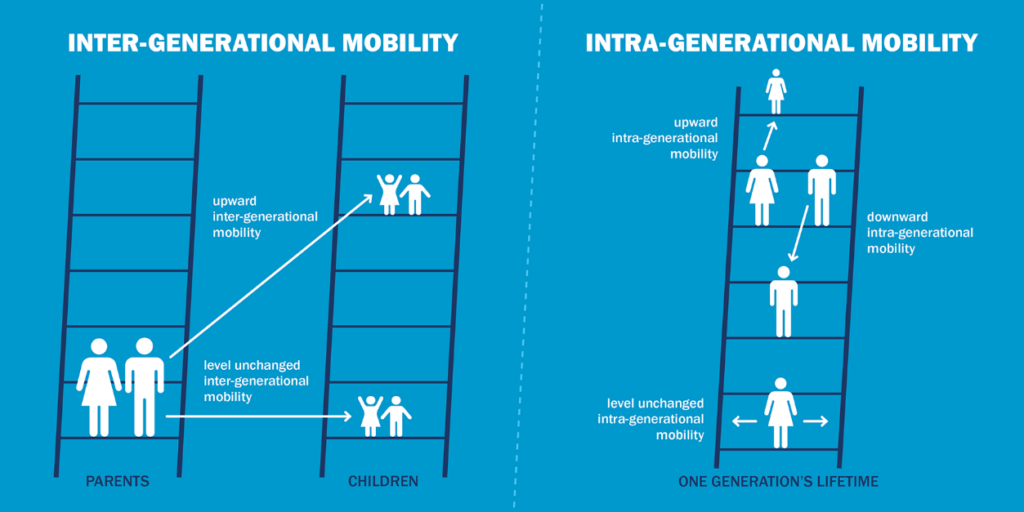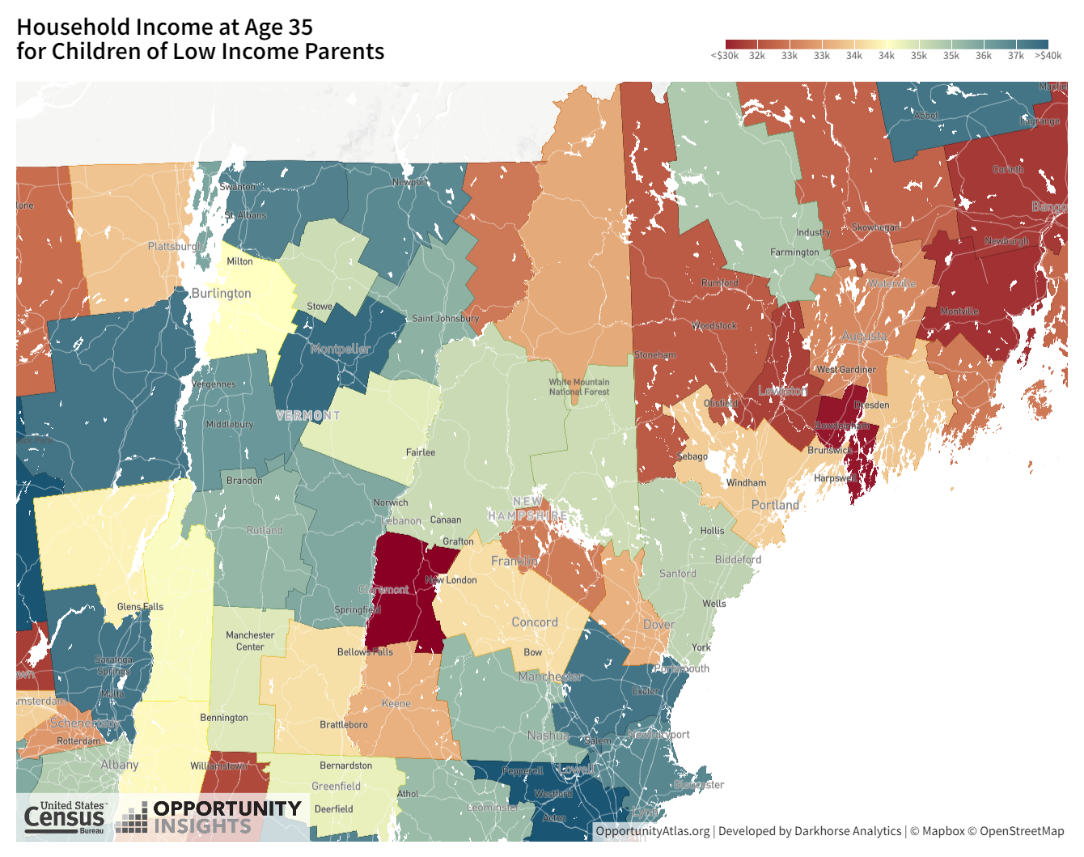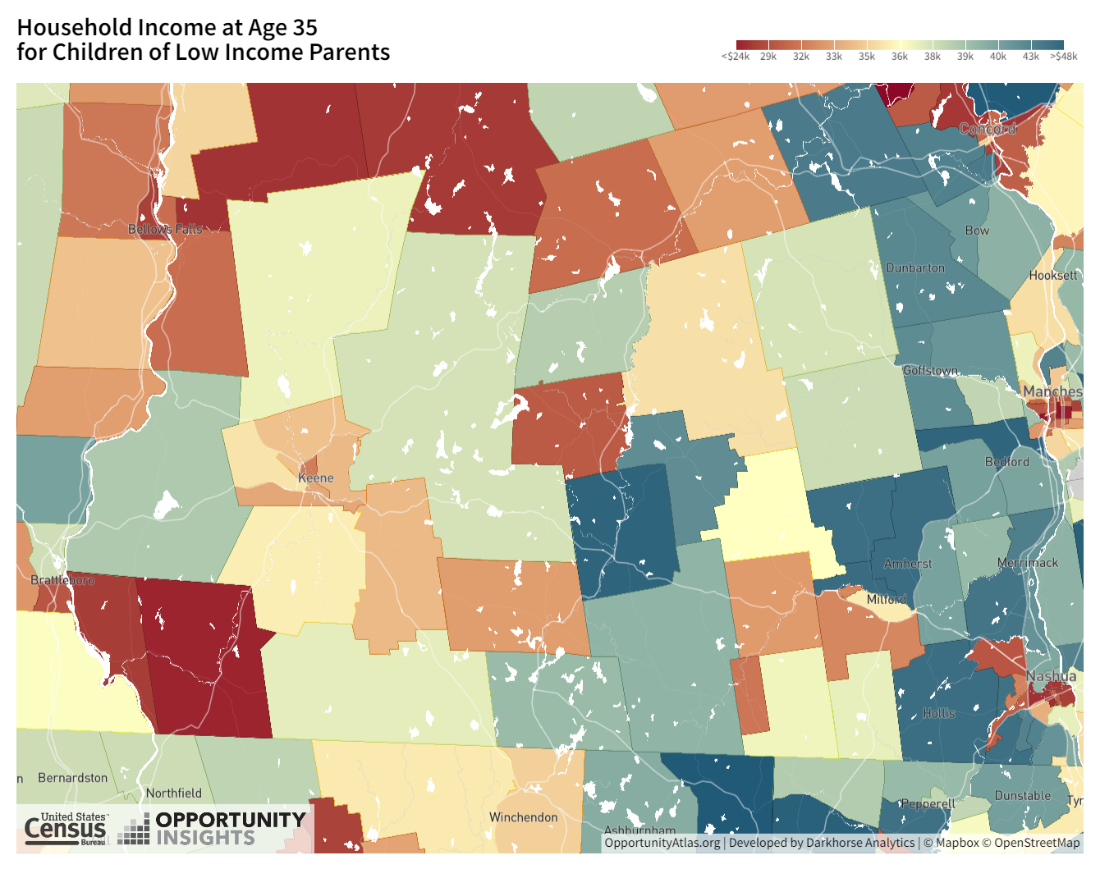The American Dream has inspired (and continues to inspire) millions of people as they try to navigate the most important decisions in life: where to move, where to go to school, what to study, what job to accept, and the people with whom we form to form relationships with as friends and colleagues. The American Dream is predicated on the idea that anyone – regardless of where they were born or the class they were born into – can attain their own version of success in a society where upward mobility is possible for everyone. Through hard work and sacrifice, we can all reach our own definition of success.[1]
One critical element of the American Dream is represented in the idea of economic mobility. In other words, the ability of individuals or groups to be able to improve their economic well-being over time.[2] Economic mobility is most often measured by looking at changes in income over the course of one’s life and career. As someone earns more over their lifetime, that person is considered to be upwardly mobile, indicating their economic situation is getting better. By contrast, when someone’s income stays flat or decreases over their life, that person may be considered downwardly mobile.
If the focus is on success and mobility over one lifetime, as described above, this is what is known as intra-generational mobility. However, economic mobility can also be studied by comparing an individual’s income to that of previous generations, most commonly their parents. This is what’s known as inter-generational mobility. For example, researchers will often look at children who were born to parents in the bottom 20% of the income ladder, and study if they earn at a higher bracket once they are adults.

Inter- vs. Intra-generational mobility. Source: National Association of Counties
Whether someone is considered upwardly or downwardly mobile can influence a wide range of opportunities available to that individual: access to high quality education, geographic mobility, the ability to purchase a home, as well as quality healthcare.
As policy makers and planners look at economic mobility across geographies, they often look for trends in areas which appear to provide a better environment for upward economic mobility than others. Emerging research has helped identify a number of factors that influence economic mobility within a community or broader region, including neighborhood safety, education, housing and financing security, access to labor markets, to name a few. Interestingly, very recent research identifies social connections as perhaps the best indicator of economic mobility.
One of the most valuable tools today when looking at economic mobility across geographies is the Opportunity Atlas. This tool is built upon anonymized data on 20 million Americans researchers have mapped back to the Census tract in which they grew up, and estimated individual income, incarceration rates, and other outcomes by their parental income level, race and gender. The data yields several insights into how neighborhoods shape children’s trajectories and economic mobility into adulthood.
As we look at Southwest NH, there appears to be a wide range of life outcomes for children depending on the area in which they grew up. Looking at the county level, Hillsborough County appears to lead Cheshire County and Sullivan County in upward economic mobility among those children born to parents earning a low (i.e., 25th percentile) income. According to this metric, Sullivan County fairs the worst in the state in this regard as children of low-income parents went on to earn an average household income of just $29k by the time they reach their mid-thirties.

As we look across our state borders, we see Cheshire County and Sullivan County both also trail Windsor County and Windham County to our west in Vermont, as well as Franklin County and Worcester County to our south in Massachusetts. It’s unclear why these differences exist; possibly due to different policy environments in the three states or there are more complex factors at play that would help explain why our nearby MA and VT counties may lead to greater economic mobility among this target group.
Looking more closely within our Region, the communities of Peterborough and Greenfield stand out among the most successful at promoting upward economic mobility, while in just the next town over, Hancock, economic outcomes are noticeably reduced. Our two southwestern-most communities, Winchester and Hinsdale trail further behind in this respect.

Going forward, it is worth considering the range and confluence of factors that may be contributing to this variation in economic mobility across the counties and communities in our region: uneven economic gains, limited investment, educational opportunities, affordable housing, and/or economic connectedness (which will be the topic of future post). As we better understand these local factors, it is likely we will be more equipped to recommend opportunities (i.e., levers) for intervention in areas where mobility remains low, as well as learn from and bolster areas where mobility is high.
[1] Barone, A. (2022). What Is the American Dream? Available online: https://www.investopedia.com/terms/a/american-dream.asp
[2] The Bell Policy Center. What is Economic Mobility? Available online: https://www.bellpolicy.org/what-is-economic-mobility/